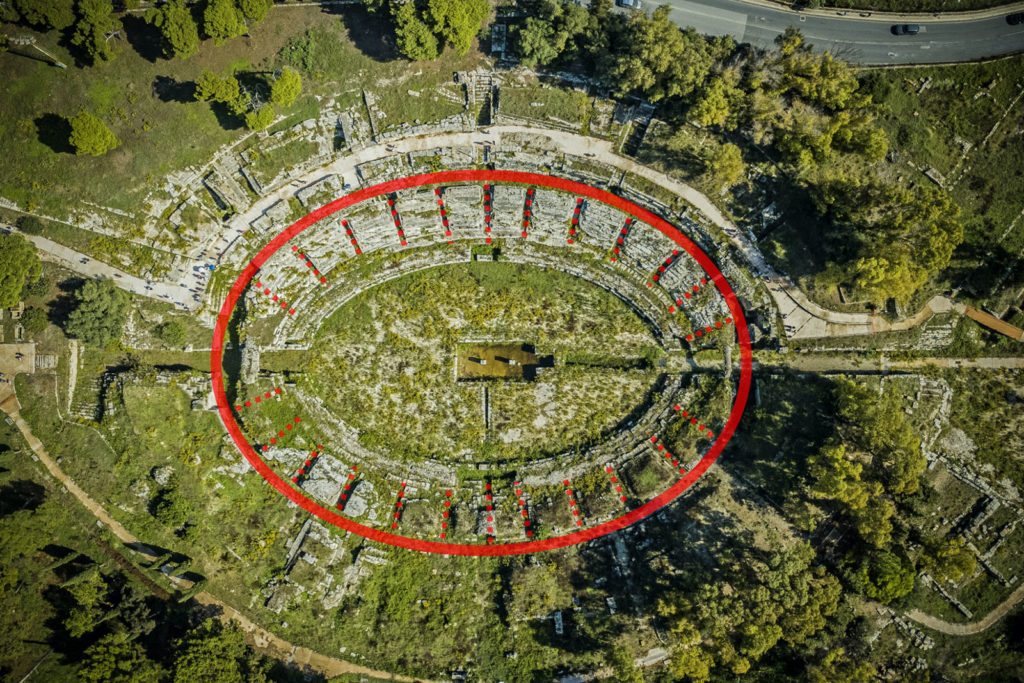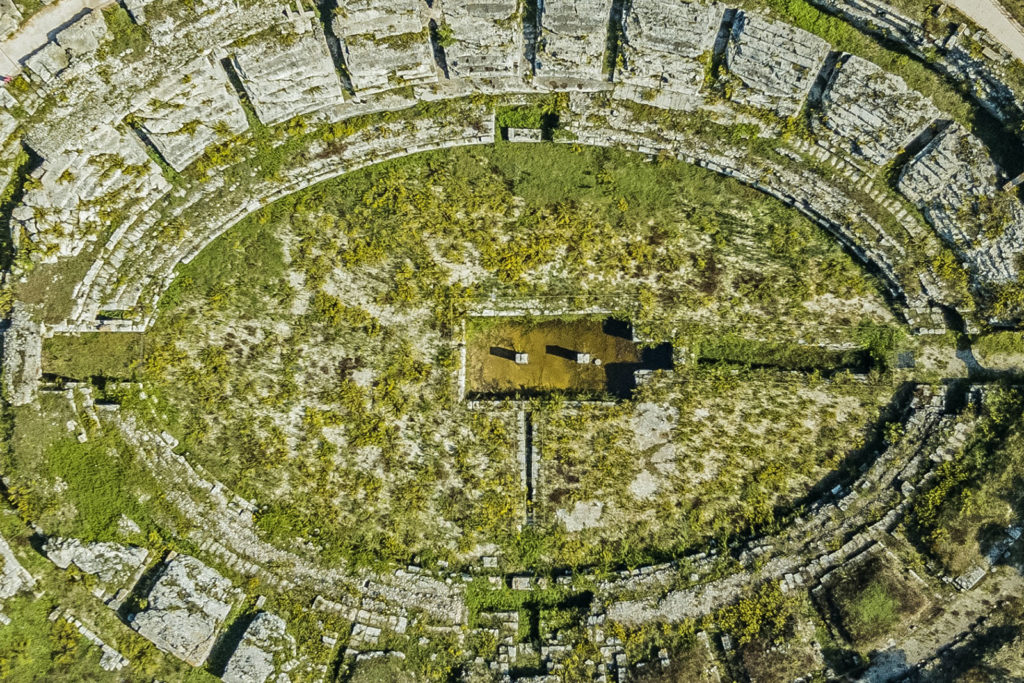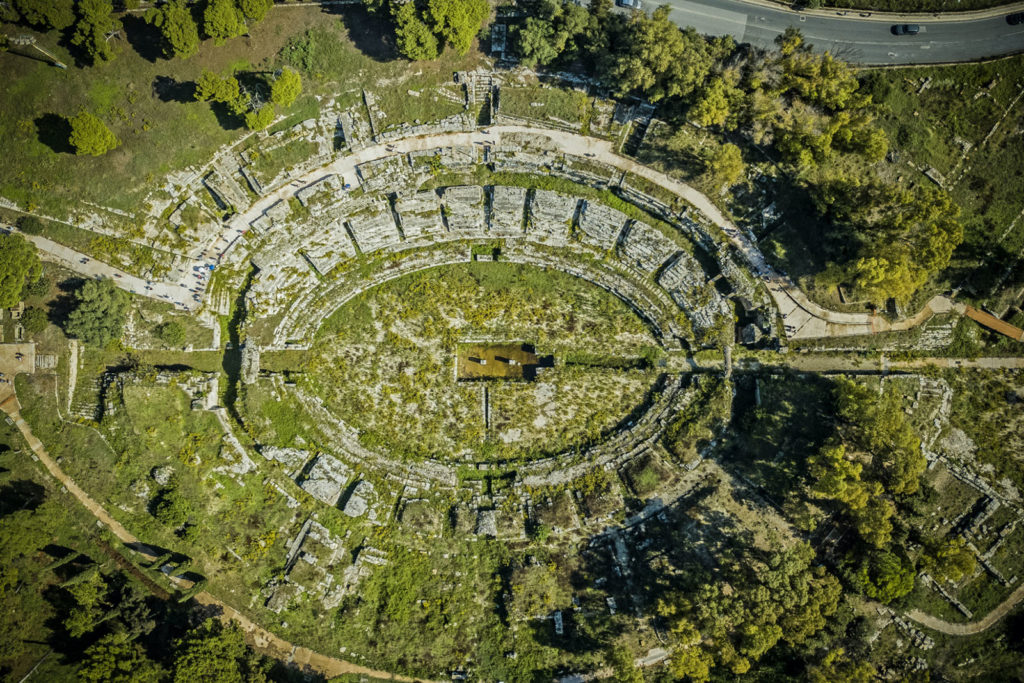The Roman Amphitheatre of Syracuse, during the Imperial Age, was one of the most representative examples of Roman architecture in Sicily.
Of this grandiose oval structure, mostly dug into the rock of the Acradina Hill, only the arena (the central part of the structure where performances took place) and a part of the cavea, (the set of brickwork steps where the spectators sat) remain.
The building had two entrances, one facing north, and the other, the main one, facing south in line with a large honorary arch from the Augustan period, of which the base has survived. Past the entrance, a long corridor led into the great arena.
The centre of the amphitheatre consisted of a flat elliptical area covered with sand, called the arena. Around it stood the
cavea

. These steps were usually divided into sectors, so that spectators of different wealth and social status did not mix.
The steps were originally covered with marble slabs laid to prevent deterioration of the rock. You can still see some engraved with the names of the most illustrious spectators. The pulvinar, a podium reserved for authorities, was located in one of the two far sides of construction’s smaller diameter.
The arena, surrounded and enclosed by a high podium, still preserves an underground chamber covered by a wooden structure that hid the machines used during performances. A well-preserved underground corridor ran around the central space and had eight openings, from which gladiators, fighters and wild beasts were introduced to the audience.
In fact, the amphitheatre housed a multiplicity of performances, from gladiator fights to venationes and the famous naval battles called
Naumachiae

.


